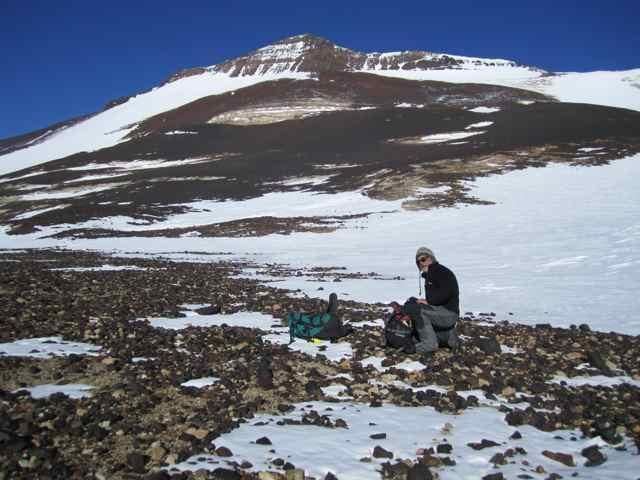Prominence 2,601 m Listing Ultra-prominent peak | Elevation 4,528 m | |
 | ||
Similar Mount Markham, Mount Tyree, Mount Shinn, Mount Rutford | ||
Mount Kirkpatrick is a lofty, generally ice-free mountain in Antarctica's Queen Alexandra Range. Located 8 km (5 mi) west of Mount Dickerson, Mt. Kirkpatrick is the highest point in the Queen Alexandra Range, as well as in its parent range, the Transantarctic Mountains. Discovered and named by the British Antarctic Expedition (1907–09), the mountain was named for a Glasgow businessman, who was one of the original supporters of the expedition. Mount Kilpatrick is an alternate name for this mountain.
Contents
Map of Mount Kirkpatrick, Antarctica
Mount Kirkpatrick as a fossil site
Mount Kirkpatrick holds one of the most important fossil sites in Antarctica, the Hanson Formation. Because Antarctica used to be warmer and supported dense conifer and cycad forest and because all the continents were fused into a giant supercontinent called Pangaea, many ancient Antarctic wildlife share relatives elsewhere in the world. Among these creatures are tritylodonts, herbivorous mammal-like reptiles that are prevalent elsewhere at the time. A crow-sized pterosaur has been identified. In addition to these finds, numerous dinosaur remains have been uncovered. Fossils of dinosaurs resembling Plateosaurus, Coelophysis, and Dilophosaurus were excavated. Mount Kirkpatrick holds the first dinosaur scientifically named on the continent: the large predatory Cryolophosaurus. In 2004, scientists have even found partial remains of a large sauropod plant-eating dinosaur.
Glacialisaurus hammeri, an herbivorous dinosaur thought to be around 25 feet (7.6 m) long and weighing perhaps 4-6 tons, was also identified from fossils on Mt. Kirkpatrick in 2007, the only known site of Glacialisaurus hammeri.
